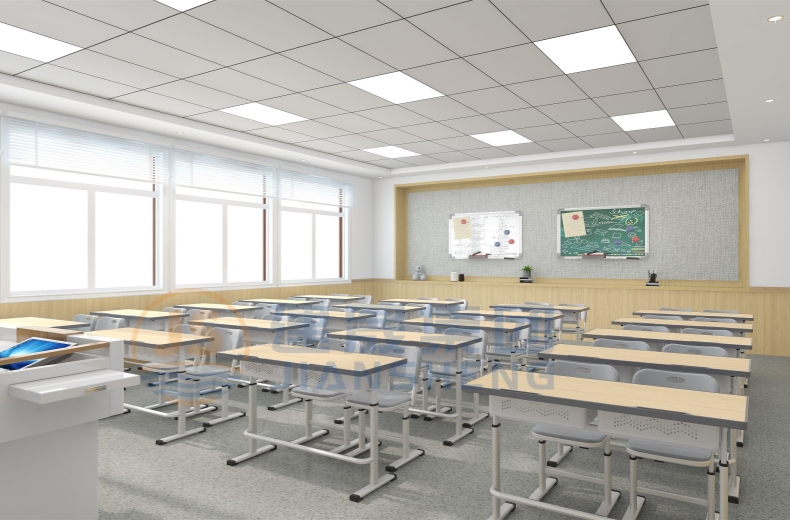- Home
- About Us
- Service
-
Solution
- Kindergarten Classroom
- Primary School Classroom
- Secondary School Classroom
- High School Classroom
- College Classroom
- Training Classroom
- Music Classroom
- Art Classroom
- Lecture Classroom
- Computer Classroom
- Library
- Principal Office
- Administration Office
- Meeting Room
- Reception Room
- Public Area
- Teachers' Office
-
Products
- Case Study
- News
- VR Designs
- Video Center
- JS Lab
- Contact Us

Cost and time required to customize school furniture
2024-04-15 22:00
Cost and time required to customize school furniture
Customized school furniture plays a pivotal role in creating engaging, comfortable, and functional learning environments that cater to the diverse needs of students and educators. However, understanding the cost and time implications of customization is crucial for effective planning and budget management. Here’s an exploration of the factors influencing the cost and time of customizing school furniture:
1. Design Complexity: The complexity of the design significantly influences both the cost and time required for customization. Intricate designs with unique features or specialized functionalities may involve higher material costs and longer production times due to the need for detailed planning, prototyping, and manufacturing.

2. Materials and Quality Standards: The choice of materials and adherence to quality standards impact the cost of customized school furniture. High-quality materials that meet safety, durability, and environmental sustainability requirements often come at a premium price. Additionally, sourcing eco-friendly or specialized materials may extend production timelines.
3. Customization Scope: The extent of customization required affects both cost and time considerations. Minor modifications to existing furniture designs may incur lower costs and shorter lead times compared to fully bespoke solutions that demand extensive design iterations, engineering, and manufacturing processes.
4. Volume and Scale: The volume and scale of the customization project influence economies of scale and production efficiency. Larger orders may benefit from bulk discounts and streamlined manufacturing processes, resulting in lower costs per unit and faster turnaround times.

5. Collaboration and Communication: Effective collaboration and communication between educators, administrators, designers, and manufacturers are essential for efficient customization. Clear articulation of requirements, feedback, and revisions can help streamline the customization process and minimize delays.
6. Regulatory Compliance: Compliance with safety, ergonomic, and environmental regulations is paramount in school environments. Ensuring that customized furniture meets applicable standards may require additional testing, documentation, and verification processes, which can impact both cost and time.
7. Prototype Development and Testing: Prototyping and testing are integral steps in the customization process to validate design concepts, functionality, and ergonomics. Developing prototypes and conducting rigorous testing may extend project timelines but is crucial for ensuring the suitability and usability of the final product.

8. Installation and Assembly: Consideration should be given to installation requirements and assembly procedures associated with customized school furniture. Complex installations or specialized assembly processes may incur additional costs and time commitments, particularly for large-scale deployments across multiple classrooms or facilities.
9. Project Management and Coordination: Effective project management and coordination are essential for keeping customization projects on schedule and within budget. Dedicated project managers who oversee timelines, budgets, resource allocation, and stakeholder communication can help mitigate delays and cost overruns.
10. Post-Implementation Support: Factoring in post-implementation support and maintenance is vital for the long-term sustainability of customized school furniture. Service agreements, warranties, and ongoing support from manufacturers contribute to the total cost of ownership and should be accounted for during the customization process.
In conclusion, while customized school furniture offers tailored solutions to enhance learning environments, it is essential to consider the associated costs and timeframes comprehensively. By accounting for design complexity, materials, customization scope, volume, collaboration, regulatory compliance, prototyping, installation, project management, and post-implementation support, educational institutions can make informed decisions to optimize the value and effectiveness of customized school furniture initiatives.
Get the latest price? We'll respond as soon as possible(within 12 hours)







